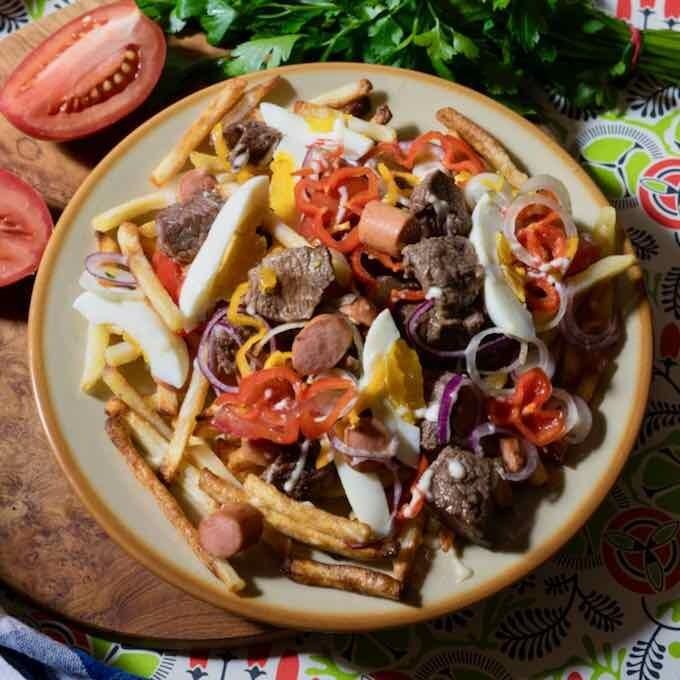- Home
- Travel news
- MICE business
- Country news
- Abu Dhabi
- Argentina
- Armenia
- Austria
- Azerbaijan
- Australia
- Bali
- Baltic
- Belgium
- Bolivia
- Botswana
- Brazil
- Budapest
- Cambodia
- Canada
- China
- Chile
- Colombia
- Costa Rica
- Croatia
- Cyprus
- Czech Republic
- Dubai
- Ecuador
- Egypt
- Finland
- France
- Germany
- Greece
- Hong Kong
- Iceland travel news
- India
- Ireland
- Israel
- Italy
- Japan
- Jordan
- Kazakhstan
- Kenya
- Lebanon
- Malaysia
- Malta
- Mauritius
- Mexico
- Montenegro
- Morocco
- Namibia
- Netherlands
- New Zealand
- Oman
- Panama
- Peru
- Poland
- Portugal
- Russia
- Qatar
- Saudi Arabia
- Scandinavia
- Scotland
- Senegal
- Serbia
- Singapore
- Slovenia
- South Africa
- Travel news South Korea
- Spain
- Switzerland
- Travel news Tanzania and Zanzibar
- Thailand
- Tunisia
- Turkey
- Ukraine
- United Kingdom
- USA
- Uzbekistan
- Vietnam
- West Africa
- Zambia and Zimbabwe
- Useful links
- Sports events calendar
- Contact/contribute

What’s cooking? World recipes

Top Traditional Bolivian Food
Pique Macho
Pique macho or pique a lo macho is the ultimate and emblematic dish of Bolivian cuisine.
Although it was created in Cochabamba in 1974, it was very quickly adopted by the entire population of the country. According to a survey, pique macho is the favorite dish for a third of Bolivians. Its simplicity of execution, its variety of condiments and its flavor are the winning combination of a dish adopted by a whole nation.
Restaurants, markets, street vendors, caterers, street stalls serve pique macho at all hours of the day and sometimes even until the end of the night to satisfy hungry night owls. This plate or dish to share is an overabundance of ingredients, among which you can find sautéed beef, fried potatoes, onions, boiled eggs (soft or hard), tomatoes, hot peppers, sausages or even spices like cumin. Pique macho means a large portion while a pique is a single serving. The most hearty version is generally spicier than the other. It is assumed that you are a “real man” only if you manage to finish the big version by yourself. You deserve the title of macho! Usually, Bolivians are content to share a large portion between friends or couples.
HOW TO MAKE PIQUE MACHO
To make a good pique macho, the quality of the beef is paramount. Loin is an extremely tender and tasty part, probably one of the best and in fact it deserves to be treated with care. Its cooking must be perfect according to the tastes of whoever will eat the pique macho. Nevertheless, it is better not to overcook the loin because it is much better rare or medium rare, with a nice caramelization all around.
In order to focus on the cooking of the beef, it is best to cut all the vegetables ahead of time. You can start by frying the potatoes, then the sausages. The meat is mixed with some spices. Peppers, onions and tomatoes are briefly seared then comes the cooking of the beef loin. You can end by warming the sausages and proceed to assemble the dish, starting with a bed of French fries topped with pieces of beef loin and sausages, vegetables and hard-boiled eggs, before finishing with raw vegetables, mustard and mayonnaise.
WHAT IS THE ORIGIN OF PIQUE MACHO?
Although the origin of the pique macho is clear, its history is surrounds by urban legends. People claim that after a long day of work, a group of workers went to a restaurant in Cochabamba in the hope of finding a good, invigorating meal. As he was about to close, the restaurant owner assembled all the ingredients that he had, brought this dish to the workers and challenged them: “Eat if you are a man” (piquen machos in Spanish).
What is more certain is that this dish is the creation of Mr. Honorato Quinones and his wife Evangelina Gomez Quinones, both owners of Restaurante Miraflores in Cochabamba, Bolivia. The restaurant is still in operation today, and you can obviously order a pique macho that is known to be quite spicy. The restaurant offers chorizo in addition to sausages and a version with pork loin instead of beef loin. The potatoes are cut into cubes and not French fries.
Pique macho is a rich and caloric dish. Although this dish is unique, it is not unlike Quebec poutine where a bed of French fries is topped with melted cheese and sauce. Montreal restaurants offer many versions where meat of all origins and vegetables are added. It is also reminiscent of Peruvian lomo saltado, although lomo saltado has Chinese influences and is served with rice.
Ingredients
2 lb beef loin
1 lb sausages , sliced
8 medium potatoes , cut into French fries
3 tablespoons vegetable oil
4 large onions , chopped
2 medium tomatoes , peeled, seeded and diced
8 chili peppers , diced
2 cloves garlic , chopped
1 teaspoon cumin
Frying oil
Salt
Ground black pepper
4 hard-boiled eggs
Instructions
In a pot, heat a large volume of oil at 350 F / 170 C, and add the potatoes. Fry for 8 minutes.
Drain and set aside. Keep the cooking oil.
Heat 5 tablespoons of the cooking oil in a pan and fry the sausage slices for a few minutes. Drain and set aside.
Cut the meat into small pieces and season with salt, garlic, black pepper and cumin. Mix well by hand to soak the seasoning.
Heat 3 tablespoons of vegetable oil in a pan and fry the locotos for 2 minutes, stirring constantly. Add the onion, tomato and a pinch of salt. Mix well.
Add the meat and mix well.
For the cooking time of the beef:- Rare: 2 minutes, over very high heat.- Medium-rare: 3 minutes over high heat.- Medium: 4 minutes, over medium heat.- Well done: 5 minutes over low heat.
Heat the large volume of oil again to 375 F / 190 C, and fry the potatoes again for 3 minutes. Drain and season with salt immediately.
Add the reserved sausages to the meat and mix everything.
Serve with hard-boiled eggs.
Garnish with strips of raw locotos, sliced raw tomatoes, mustard and mayonnaise.
If you’ve never tried it please make sure to ask for it when you travel to Bolivia
spotted in www.196flavors.com

More about our Facebook Group

Private Facebook group
for the travel industry
Travel Talks Platform Group
5.8k members
Travel Talks Platform for the travel industry
Follow the travel news – Traveltalksplatform is the number 1 news site to stay updated on amazing travel facts, the latest news, events, incentive ideas, MICE news, job opportunities and shows.
Specially composed for the travel industry, you will find the latest travel facts at your fingertips.

The latest airline news, hotel news, cruise news and MICE news in your inbox:
Stay updated about
the latest travel news worldwide
Copyright © 2021 e-motions international
disclaimer:
We assume no responsibility or liability for any errors or omissions in the content of this site. The information contained in this site is provided on an "as is" basis with no guarantees of completeness, accuracy, usefulness or timeliness.